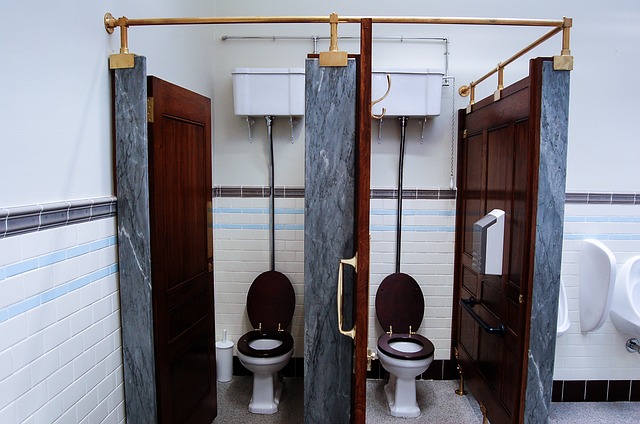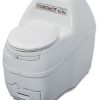You may have never given toilet paper a second thought. It’s always there at every toilet, and if you run out at home, you just buy some at the store. Have you ever considered the history or variations of it though? Keep reading to learn all about toilet paper.
 21,000 Sheets Of Toilet Paper Per Year
21,000 Sheets Of Toilet Paper Per Year
Did you know that the typical American goes through more than 21,000 sheets of toilet tissue every year? Even if you didn’t know, you do now, and that’s why it’s hard to even entertain the notion that other things were used before the invention of toilet paper.
If you do the math, you’ll realize that everyone uses more than 100 rolls on their own, every year. Before toilet paper was around, the options weren’t so great. Paper was sometimes used, but so too were grasses, leaves, sticks, and even rocks. Now, even those camping in the wild tend to pack toilet paper of some kind or another. Many people are so used to toilet paper being available now that they use it for more than just cleaning themselves after spending time on a toilet. Toilet paper is used for bandaging up shaving cuts, removing makeup, and wiping noses, among many other reasons.
Toilet Paper First Developed Around 1880
The British Perforated Paper company first developed toilet paper around 1880. At first, these papers weren’t on rolls but put in boxes stacking up the individual squares. It was an American company, the Scott Paper Company, that started doing toilet paper rolls not long after. The early rolls weren’t perforated. Toilet paper dispensers of that time had serrated edges, where teeth were used for cutting the paper to the needed size and shape.
Many folks believe now that only one kind of toilet paper exists, but that’s far from the case. When you shop in a pharmacy, grocery store, warehouse savings center, or a janitorial supply e-commerce site, the toilet paper might look very similar on the outside, but there are factors that differentiate the options, including absorption, softness, weight, and size. Given how many different kinds there are for both commercial and home use, you need to first know and decide what kind of paper you want before you buy. You have to make decisions such as regular versus coreless, jumbo or standard, and 1-ply or 2-ply. However, before you can possibly make such considerations, you need to know what these various differences actually mean.
Four Primary Types
The current marketplace has four primary kinds of toilet paper. They are;
- standard toilet paper
- interleaved toilet paper
- mini-jumbo rolls
- full jumbo rolls.
Standard toilet tissue is the kind of paper you usually see in office restrooms or residential settings, sometimes packaged in cases of 48 rolls. Residential homes often use 3-ply paper, whereas commercial settings are more likely to use 2-ply sheets. In fact, the 2-ply/400-sheet toilet roll is often the most common bathroom paper among resellers and distrubutors, considering how well it sells. However, 2-ply/700-sheet rolls are growing in popularity, given their equal physical quality but better cost-effectiveness. On smaller scales, you can also find 1-ply/850-sheet and 1-ply/1000-sheet options. They can prove very economical in terms of cost, given the larger number of sheets per roll, but since they’re only 1-ply, quality does go down.
In public restrooms, you’re most likely to see jumbo rolls of the stuff, which are packed in cartons of 8 rolls. 2-ply jumbo rolls usually measure 30cm across and roughly 300m if they get unrolled. 1-ply jumbo rolls are obviously double this. A mini-jumbo roll of toilet tissue is not as large as a full jumbo, often measuring 170m if 2-ply were unrolled. Jumbo rolls of toilet tissue are sometimes known as ‘JRT’ rolls. As compared to interleaved or standard rolls, jumbo rolls are typically the most cost-efficient option.
Interleaved toilet paper is common in many public restrooms, often in cartons of 36 units. Like standard and jumbo rolls, interleaved tissue comes in both 1-ply and 2-ply forms. A 2-ply interleaved tissue is often 250 sheets per pack, with 1-ply being the obvious double of 500 sheets. Rather than being rolls, any interleaved paper is actually folded in layers on top of one another. Interleaved toilet paper isn’t used frequently because it costs more than both standard and jumbo rolls.
The general feel of toilet tissue is the last but perhaps greatest consideration when buying. Most bathroom tissue gets made from identical or at least similar materials, and they degrade when they get flushed. However, not all give the same texture in times of actual use. To that point, a number of toilet tissues might actually be a little rough. They might be cheaper, but they can also prove irritating if used a lot. However, softer options exist that are easier on the skin. Softer toilet tissue often costs a bit more, but anyone who likes the texture is unlikely to worry about paying more.
Softness
The softness of a toilet paper is proportional to its ply. Ply is a term that describes how many actual layers the paper has. 1-ply and 2-ply are the most common sheets. These respectively have an  individual or pair of layers which are bonded together. The kind of material used in the manufacture of toilet paper also factors into how soft it is.
individual or pair of layers which are bonded together. The kind of material used in the manufacture of toilet paper also factors into how soft it is.
A handful of toilet tissues use finer materials to make their paper softer. Papers that are recycled typically aren’t as soft when compared to tissues made from virgin materials. Having said that, recycled papers are typically cheaper than virgin options, and they’re growing in popularity among those that emphasize environmental sustainability as part of their beliefs and lifestyle.
- Toilet paper dispensers also come in various forms, and the following four are the most common:
- Single Jumbo Roll Dispenser: Users manually dispense from these, which old a single roll of jumbo toilet paper.
- Double Jumbo Roll Dispenser: Two rolls of jumbo toilet paper are held aside one another until the user manually dispenses what they need.
- Triple-Line Roll Dispenser: A dispenser like this can hold up to three standardized rolls of toilet paper, as they are on top of each other. Users manually dispense the paper they require.
- Interleaved Toilet Paper Dispenser: This is a dispenser that holds around four packages of interleaved toilet tissue. It gets stacked vertically, and the user manually dispenses it.
No matter how you slice it – toilet tissue is an integral part of our lives and is not going away anytime soon. And we are not going to limit our usage to one or two squares!




